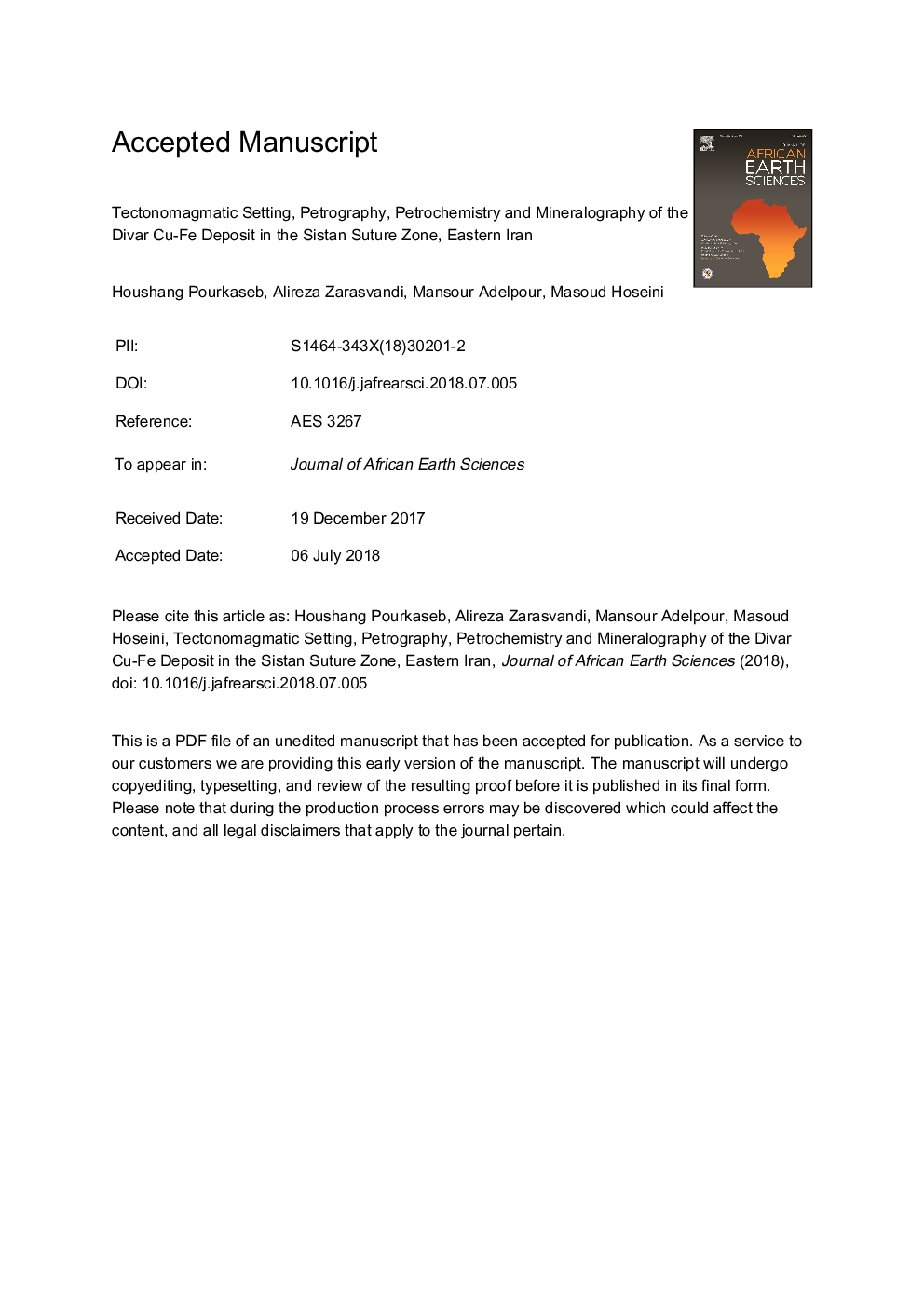| Article ID | Journal | Published Year | Pages | File Type |
|---|---|---|---|---|
| 8913380 | Journal of African Earth Sciences | 2018 | 41 Pages |
Abstract
The Divar Cu-Fe deposit is located in the Nehbandan Ophiolite Complex (NOC). It is hosted in the Sistan Suture Zone (SSZ) marking the boundary between the Lut and Afghan continental blocks. This deposit is hosted in various ophiolitic rock units representing a tectono-sedimentary mélange that is generally interpreted as remnants of the Sistan oceanic lithosphere. The country rocks cropping out in the Divar deposit are mantle peridotites, gabbronorite, cumulate gabbro, basalt and pelagic sediments that formed in the mid-ocean ridge (MOR) setting. Observations from outcrops and drill cores indicate that mineralization in the studied area is mainly massive. There is also a poorly developed stockwork/disseminated ore at the bottom of the massive zone and a surface-oxidized zone or gossan at the top of deposit. Disseminated and stockwork ores are hosted in the serpentinized peridotites and severely altered pillow basalt. According to mineral assemblages and the cross-cutting relationships of the orebody, two mineralization stages are identified: (I) stage I is characterized by sulphide minerals including pyrite, chalcopyrite, pyrrhotite and sphalerite; and the second stage (II) is dominated by Fe-oxide minerals (e.g., magnetite and specularite). It seems that the increase in the pH and oxygen fugacity along with decreasing sulfur activity lead to the increase of magnetite precipitation from the ore-forming fluids. In this stage (II), magnetite replaces all pre-existing sulphide minerals of the first-stage (I). The geological, mineralogical and geochemical features of the Divar deposit together with its trace element, Zn-Cu-Pb-Au-Ag signatures suggest that the Divar deposit can be attributed to a magnetite-rich ophiolite-hosted (Cyprus-type) VMS deposit, resulting from a submarine hydrothermal system.
Keywords
Related Topics
Physical Sciences and Engineering
Earth and Planetary Sciences
Geology
Authors
Houshang Pourkaseb, Alireza Zarasvandi, Mansour Adelpour, Masoud Hoseini,
